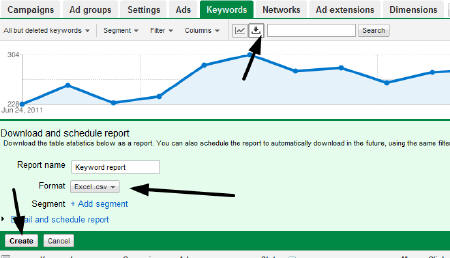How To Build Multi-Purpose Landing Pages For Small Budget Advertising
For a long time, I thought utilizing a strong Landing Page Optimization program was only available to large companies with large budgets. The software to create landing pages on the fly by keyword is pricey, and the learning curve is significant. If you have the time, budget and manpower to utilize a design team and […]
For a long time, I thought utilizing a strong Landing Page Optimization program was only available to large companies with large budgets. The software to create landing pages on the fly by keyword is pricey, and the learning curve is significant.
If you have the time, budget and manpower to utilize a design team and software that builds a landing page for every paid, organic, social and email marketing keyword or blast you send — Awesome!
The reality is, most of us do have time and budget limitations. Getting permission to spend thousands on software isn’t likely, but that doesn’t mean you have to give up on the idea. Think a bit deeper and build your landing pages for multiple purposes.
In the past, we would build a website, and send clicks to the homepage of that site. Then we got smart, and sent those same clicks to more relevant pages on the site. Then Landing Page Optimization was invented and we started hearing we needed a new page for every keyword, and the want vs. budget debate started heating up.
Limited budgets don’t mean you have to completely remove LPO from your marketing vocabulary. Think about it this way: if you can repurpose that page to give you Organic, Paid, Social and Email Marketing traffic and conversions, it makes the time investment a bit more manageable.
Then think about the reality that not every keyword needs a landing page. Many keywords are extremely similar, the same words in different combinations. Take this knowledge and repurpose your landing pages across multiple platforms.
Here are five steps to making sure your landing pages can be repurposed for multiple funnels.
Layout Your Landing Page
There are quite a few schools of thought about how to frame out a landing page. Some blueprints say a large image and a call to action, some do include text. The best advice I can give here is just to simply start somewhere and test what you’ve done.
A great tool to help you mock up pages as you go, and save layouts you’ve done or want to try, is GoMockingbird.com. I use this to wireframe pages for SEO, PPC, Email Marketing, Facebook inclusion, etc. It’s also a great way to show your design/creative department your vision when it comes to page layout. If you know a UX expert, or have someone on your design staff that “gets it” be sure to use their knowledge and experience.
Target Keywords
This tactic relies upon you having a very solid AdWords campaign. We’re going to use your AdGroup themes to set up your landing pages. AdGroups generally have very similar “like” terms and you’re testing ad copy and calls to action to see what converts best. Export your AdWords keywords and sort by AdGroup. Use this information to decide what landing pages you need to build for each set of terms. You can then use this information to build your Landing Page.
Add Content
After you export your keywords by AdGroup, make a list of the landing page content you need. Each “Group” of keywords needs between 150 and 200 relevant words that are themed around those keywords. Do not stuff each keyword into your content verbatim, use synonyms, write naturally – bold your main idea and don’t be afraid to use bullets to list the benefits of your product(s).
Create Calls to Action
Review your PPC ads and use the best performing ad headline as your call to action: “Book your Getaway Today” or “Limited Time Offer”. You can combine on-page testing via Website Optimizer with some PPC ad rotation testing to find the best combination of call to action and keyword group.
Track It
Sending multiple clicks to the same landing pages can make your tracking a bit tricky, but if you’re careful, you can see each portion of revenue a segment delivers. You can use a few tactics, Google offers different Analytics options and filters to help you out.
The best way, in my opinion, is to using source codes on the links and building custom segments in your Analytics platform.
Remember, if you want these pages to rank organically as well, you’ll need to fit it into a logical place in your navigation, add content, build internal links and tie its existence in with the rest of your website. These landing pages aren’t meant to be an “add on” with no place to live in the architecture of your site.
Landing pages are designed to convert traffic, but they don’t need to be a one-hit wonder. You can combine Organic, Paid and Email Marketing tactics with your landing pages to get great results on a shoestring budget.
Contributing authors are invited to create content for Search Engine Land and are chosen for their expertise and contribution to the search community. Our contributors work under the oversight of the editorial staff and contributions are checked for quality and relevance to our readers. The opinions they express are their own.
Related stories
New on Search Engine Land

